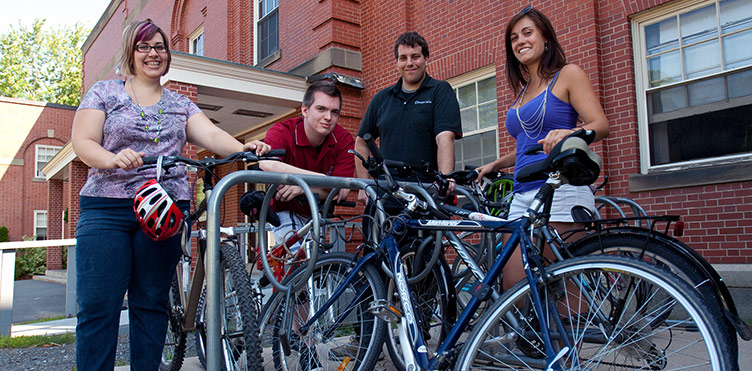Climate Change 101
Time required: 70-80 minutes
Welcome to Climate Change 101. This online module was developed by UNB Sustainability and the Office of Experiential Education to introduce the concept of climate change.
To get started, please watch the video or read the video transcript. Click the play button (>) on the video to start. You can turn on video subtitles using the [CC] button in the bottom right corner of the video or open the video transcript.
Prefer text?
Read the transcript
This online module was developed by UNB Sustainability and the Office of Experiential Education to introduce the concept of climate change.
The difference between climate and weather is that weather can change quickly and suddenly. In contrast, climate describes the long-term pattern of weather in a particular area. For example, in general, there is hotter weather in Costa Rica compared to New Brunswick.
Climate change is defined as a long-term change in the average weather patterns that have come to define Earth's local, regional, and global climates.
But what does this mean?
- Hotter summers and more frequent heat waves
- Increases in forest fires
- Melting ice caps and glaciers
- Increases in severe weather such as hurricanes
- Changes in patterns of precipitation leading to droughts and flooding
- And more...
Many of these changes are already becoming visible and are taking heavy tolls on human health, infrastructure, food security, global biodiversity and where it is safe for humans to live.
In fact, many people argue that we are in the midst of a climate change crisis.
There are two types of actions being taken by world governments, industries, organizations, and communities in response to climate change. These are Adaptation (the process of making something suitable for a new use or purpose, such as developing new crops) and Mitigation (the act of reducing the severity, seriousness, or painfulness of something).
Much focus at the international level has been on mitigation. As our current crisis is the result of human activities that release greenhouse gases such as carbon dioxide and methane, limiting our production of these gases seems like a sensible goal. Strategies such as carbon taxes, emission caps, and carbon credits have all been suggested, but there are disagreements about how to implement these fairly and who should take more responsibility.
Most scientists agree that in order to avoid the worst of climate change, Earth’s global temperature cannot be allowed to increase by more than 1.5 - 2 degrees Celsius. To reach this target, global emissions must start declining by 2025 and half to a quarter of all emission cuts must occur by 2030. This means we’re on a very tight schedule.
In this module, we will take a look at the greenhouse effect, the main driver behind global climate change. We’ll look at how climate change integrates with the United Nations sustainable development goals and the role of the Intergovernmental Panel on Climate Change (IPCC). We’ll also consider some of the barriers slowing climate change action, as well as some of the more positive actions taking place.
Understanding the Greenhouse Effect
Please watch the video or read the video transcript.
Prefer text?
Read the transcript
Space is a cold place. So what makes Earth a place where life survives and thrives?
The short answer is the Greenhouse Effect.
Think of a greenhouse; the clear glass allows sunlight to pass through into the greenhouse while trapping the sun's heat inside; this keeps the plants warm at night and during the winter. This is similar to how the Greenhouse Effect keeps the Earth warm.
So, how does the Greenhouse Effect work?
The answer is our atmosphere - a thin layer of gases that surrounds the Earth. It allows energy produced by the sun, known as infrared radiation, to pass through and be absorbed by the Earth's surfaces like land and water; this causes the Earth's surface to warm. Without the gases that make up the atmosphere, infrared radiation would be reflected back into space.
Because this is so similar to how a greenhouse keeps plants warm, we call this the greenhouse effect.
The gases responsible for the greenhouse effect include carbon dioxide, methane, nitrous oxide, and water vapour. Certain levels of each of these gases naturally make up the atmosphere which also keep the Earth at a comfortable temperature. Cycles of nutrients have developed as part of Earth’s climate and ecosystems to keep things more or less in balance and make Earth a safe and comfortable place to live.
For example, carbon moves between the atmosphere as carbon dioxide and various carbon sinks, which store carbon and keep too much from building up in the atmosphere. Natural carbon sinks include forests, the ocean, and Earth’s soil.
But human activities release greenhouse gases and decrease the natural carbon sinks available. This is resulting in extra greenhouse gases, and while we need some to keep Earth habitable, too much of the greenhouse gases can overheat the Earth.
In fact, humans are now responsible for over 1.5 trillion tons of carbon dioxide in our atmosphere that wouldn’t have been there otherwise. And our activities continue. In 2019 alone, we released 37 billion tons more.
The breakdown of global greenhouse gas emissions looks roughly like this (pie chart):
With electricity and heating responsible for about ¼ of all emissions, agriculture, and land use (including deforestation) responsible for another ¼, industry (such as manufacturing) responsible for about 20%, transportation for 14%, and buildings responsible for about 6.4%. The remaining 9.6% comes mostly from the extracting, processing, and shipping of fossil fuels.
In terms of countries, about half of all greenhouse gases that have been released since the Industrial Revolution in the 1800s, have been released by North America and Europe. Today, on an annual basis, China, the United States, the EU, and India are the greatest contributors. Canada is ranked 10th in world for total emissions but actually has the highest greenhouse gas emissions per capital.
One of the tricky things to remember about greenhouse gases, is that they can stay in the atmosphere for a very long time. Nitrous oxide can stay in the atmosphere for up to 114 years before it is broken down, while carbon dioxide can stay in the atmosphere for between 300 to 1000 years before it settles back down into a carbon sink. This means that the carbon dioxide we release today could still be affecting Earth’s climate in the year 3000.
It can be difficult to think about something today having such long-lasting effects, and many of the ways Western societies make decisions don’t take quite such a long-term view.
We can look to Indigenous cultures, however, for guidance on this type of long-term thinking. The Haudenosaunee Confederacy teaches the Seventh Generation Principle, which suggests that decisions made today should result in a sustainable world for seven generations to come.
Coping with climate change and its effects, and guarding against worse ones in the future, will require cooperation between nations, industries, and individuals to limit and control greenhouse gas emissions.
Learn more about greenhouse gases
"The Haudenosaunee have articulated the Seventh Generation Principle, but all Indigenous Nations adhere to guiding principles with similar teachings embedded within their worldviews. For example, Mi’gmaq people end a prayer with the words "M’st No’gmaq" as an acknowledgement to our ancestors and to all creation for the lives we have.
"Translated into "All Our Relations" these words express our social/spiritual concept of understanding that each and every life depends on all other beings (animate and inanimate) for survival here on Mother Earth. Embedded within this concept is the reality that all creation is interconnected and interdependent upon one another as a collective. The collective includes future generations as well as the present and past, so this concept of "M’st No’gmaq" has relevance throughout the temporal and spatial dimensions of our spirituality."
- Cecelia Brooks, Saint Mary's First Nation Elder
Key definitions
Climate change - A long-term change in the average weather patterns that have come to define Earth's local, regional and global climates.
Greenhouse effect - The process in which radiation from a planet's atmosphere warms its surface to a temperature above what it would be without this atmosphere.
Greenhouse gas - A gas that contributes to the greenhouse effect by absorbing infrared radiation. Includes carbon dioxide, methane, nitrous oxide, and water vapour.
Carbon footprint - The total greenhouse gas emissions caused by an individual, event, organization, service, place or product, shown as carbon dioxide equivalent.
IPCC – The Intergovernmental Panel on Climate Change; started by the United Nations to provide policymakers with regular assessments on climate change.
The role of the IPCC
The Intergovernmental Panel on Climate Change (IPCC) was started in 1988 by the United Nations.
Its purpose is to provide policymakers with regular assessments of climate change, its impacts, future risks and options for adaptation and mitigation.
The IPCC includes representatives from 195 member countries, who elect a Bureau for each assessment cycle. The sixth and most recent cycle was completed in 2022.
Experts in a wide variety of fields affected by climate change are nominated by the IPCC member governments and observer organizations that apply to become involved in the IPCC. The Bureau selects the various authors, contributors, editors, and reviewers of the IPCC reports from these nominees. Attempts are made to balance representation from different geographical areas and by gender.
The IPCC Secretariat and Technical Support Units help support the creation of IPCC reports. All reports are based on the analysis of published research literature. No original scientific research is conducted.
The Technical Support units include:
- Working Group I: The Physical Science Basis
- Working Group II: Impacts, Adaptation and Vulnerability
- Working Group III: Mitigation of Climate Change
- Task Force: National Greenhouse Gas Inventories
IPCC Assessment Reports cover the latest scientific, technical, and socio-economic knowledge on climate change. Key reports published during the sixth assessment cycle include:
- Special Report: Global Warming of 1.5 ºC
- Special Report: Climate Change and Land
- Special Report: Ocean and Cryosphere in a Changing Climate
- 2023 Synthesis Report
Connecting the SDGs and climate change
Each of the Sustainable Development Goals (SDGs) can be directly linked to the effects and impacts of climate change:
1: No poverty
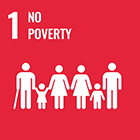
Effects: Flooding, storms, and wildfires can lead to displacement, and property damage can lead to property damage.
Effects: Flooding, storms, and wildfires can lead to displacement, and property damage can lead to property damage.
2: Zero hunger
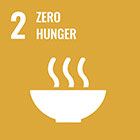

Effects: Increased CO2 causes variations in crop productivity, leading to food shortages or disruptions in supply chains.
3: Good health and well-being
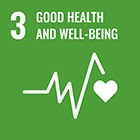
Effects: Air pollution impacts lung health, and concerns about climate change have impacted mental health for many.
4: Quality education
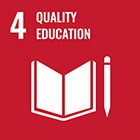
Effects: Extreme weather events and displacement impact education access.
5: Gender equality
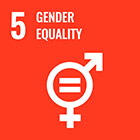
Effects: Risks to livelihoods have been shown to impact girls and those identifying as women more significantly.
6: Clean water and sanitation
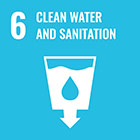
Effects: Increasing temperatures cause water scarcity.
7: Affordable and clean energy

Effects: Extreme weather events impact electricity access.
8: Decent work and economic growth
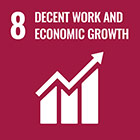
Effects: Displacement from weather events and rising sea levels impacts job security.
9: Industry, innovation, and infrastructure
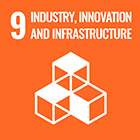
Effects: Flooding and extreme weather can severely damage infrastructure.
10: Reduced inequalities
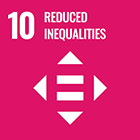
Effects: Water and food scarcities hinder social, economic, and political inclusion.
11: Sustainable cities and communities
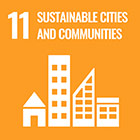
Effects: Extreme weather events impact safe, accessible, and sustainable transportation.
12: Responsible consumption & production
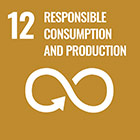
Effects: Changing climate impacts resource availability and can cause supply chain disruptions.
13: Climate action
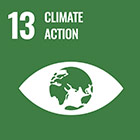
Effects: Increased frequency and severity of droughts, forest fires, extreme weather, and reduction of natural carbon sinks.
14: Life below water
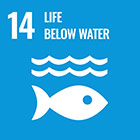
Effects: Ocean acidification impacts the health of marine ecosystems.
15: Life on land
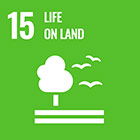
Effects: Changing weather patterns and climate changes lead to biodiversity loss.
16: Peace, justice and strong institutions
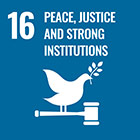
Effects: Water and food insecurity increases the likelihood of conflict.
17: Partnerships for the goals
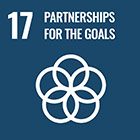
Effects: Partnerships can be strained as conflicts arise and resources are diverted to emergency situations.
Feedback loops and interactions
Please watch the video or read the video transcript.
Prefer text?
Read the transcript
Many of the effects of climate change are sometimes described as being part of feedback loops or having interactions with each other.
An example of a feedback loop is melting glaciers and polar ice. Because glaciers and polar ice are white, they reflect much of the sun’s energy, hitting those parts of the planet back into space. As temperatures rise and glaciers and polar ice shrink, darker-coloured land and ocean are revealed. Both land and water absorb more energy than ice and snow, resulting in less energy being reflected. The absorbed energy adds to rising temperatures and further shrinks glaciers and polar ice.
Feedback loops intensify the effects of climate change, reinforcing the negative effects and impacts to the SDGs described above.
For example, ocean acidification is not generally described as part of the greenhouse effect but is an important part of climate change and is caused by greenhouse gases. Carbon dioxide in the atmosphere is dissolved into the ocean where it acts to increase the acidity (sometimes described as the pH) of the water. Higher acidity has many negative effects on the ocean ecosystem, leading directly to biodiversity loss (impacting SDG 14) and to rising poverty and food insecurity in communities dependent on fisheries (impacting SDGs 1 & 2). These effects can in turn lead to rising inequalities, displacement, health issues, and even conflict (impacting SDGs 8, 10, 11, & 16).
Learn more about the connections between climate change and the SDGs:
Check your understanding
Positive action and obstacles to climate action
Climate action can happen at a variety of scales. Similar, the obstacles to climate change vary depending at what level of action you are considering.
1) International
International climate change action is almost entirely mediated through the United Nations. We've already looked at the IPCC’s role in generating climate change reports for use in decision-making, but what else has come from the United Nation’s involvement?
- 1992 Rio de Janeiro Earth Summit – Countries signed the UN Framework Convention on Climate Change, which called on industrialized nations to begin reducing emissions. The Conference of Parties (COP) was also formed to work towards international treaty targets.
- 1997 Kyoto Protocol – The first international treaty, developed by the COP, which set overall emission reduction goals for all nations. It went into effect in 2005, but the US and Canada did not ultimately participate. Exemptions, loopholes, and lack of participation resulted in global emissions continuing to rise.
- Paris Climate Agreement – Signed in 2016, this international treaty intended to go further than the Kyoto Protocol but allowed countries to set their own reduction targets and plans. Concerns about the Paris Climate Agreement center on the fact that these targets and plans will not achieve the emission reductions needed to limit warming below 1.5-2 degrees Celsius.
- COP26 – The twenty-sixth Climate Change Conference of the Parties was held in 2021, with a primary goal of accelerating action and increasing the impact of the plans made under the Paris Climate Agreement. The conference resulted in the development of the Glasglow Climate Pact, which includes agreements for countries to re-visit their targets and plans to better meet the goal of limiting warming below 1.5-2 degrees Celsius, to “phase down” (reduce) the use of coal (e.g. coal-fired power plants), and a variety of individual country pledges.
Obstacles to action:
- There are significant disagreements about who should be responsible for decreasing their carbon emissions first and most dramatically. These are based on arguments about population size, total emissions by country, and issues of social justice and development.
- Funding is often a major barrier, especially for developing countries.
- Political will is another potential barrier, as the political conversation in many countries is still dominated by an outdated narrative of climate action vs. economic success.
Learn more about who is responsible for climate change:
*External video - no transcript available
2) National
Canada has recently updated its climate action plan, and examples of actions taken to date include:
- Investing over $100 billion toward climate action and clean growth since 2015.
- Introducing the national carbon pricing strategy.
- Launching new energy efficiency programs and grants for homeowners, communities, and businesses and supporting transitions to clean energy and cleaner industry through funding and tax cuts.
- Investing additional funds in public transit programs across Canada.
- Requiring all new light-duty vehicle and passenger trucks in Canada to be zero-emission by 2035.
Obstacles to action:
- Canada has a large fossil fuel sector, and policies affecting fossil fuel production can raise fears about economic and societal effects, attracting the attention of fossil fuel lobby groups.
- Canada’s provinces have significant autonomy in a variety of areas; federal policies need to take this account when planning climate action.
Learn more:
3) Provincial
According to the government of New Brunswick, climate change action has included:
- Reducing greenhouse gas emissions by 37% from 2005 levels.
- 51% of in-province electricity sales are now from renewable sources (2020-2021).
- Launched electric vehicle incentive program and 12 energy efficiency programs for homeowners, businesses, and industry.
- Invested over $11 million in climate change initiatives through the Environmental Trust Fund.
Obstacles to action:
- New Brunswick has a large forestry sector, and policies affecting harvesting and land management can raise fears about economic effects and attract the attention of forestry lobby groups.
- New Brunswick is expected to be heavily impacted by climate change in terms of increased frequency and severity of flooding, which requires extensive planning and implementation of land management policies which may impact existing housing and infrastructure and conflict with other priorities.
Learn more:
- Visit the new NB climate change action plan site
- Read UNB Sustainability's summary of the plan
- Learn how climate change will affect NB
4) Institutional
UNB has also taken action on climate change and is the first post-secondary institution in New Brunswick to implement a Climate Change Action Plan which includes five key areas:
- Energy and infrastructure: Improving energy efficiency and reducing fossil fuel consumption on both campuses by increasing biomass as a fuel source in the Central Heating Plant, investing in renewable energy, and LED retrofits. Additionally, the university will improve campus infrastructure standards by establishing an institutional green building policy and upgrading procurement policies to incorporate sustainability
- Transportation: Increase the number of active transportation users on campus by developing of a transportation plan and reduce emissions produced by campus community by developing a new sustainable travel policy.
- Education and programs: Create educational opportunities around climate change by integrating climate change into the curriculum.
- Waste management: Reduce the amount of waste being put into landfills by using waste bin switchover, exploring opportunities for small unit composting, and exploring opportunities to recycle plastics and continue to recycle cardboard and paper.
- Sustainable grounds: Maintain its grounds to high standards by integrating tree planting protocol into Campus Master Plan.
Obstacles to action:
Some actions available to the university are limited by available municipal infrastructure and services:
- Discouraging the use of single-occupant vehicles requires an alternative: public transit must be affordable and readily accessible to students, faculty, and staff.
- One of UNB Sustainability's top priorities is diverting waste from landfills on both campuses; however, waste rerouting is limited by municipalities' curbside pickup or lack of pickup (i.e., no compost collection in Fredericton)
Other actions, such as lowering fossil fuel consumption or starting new programs, are limited by:
- Resource and funding availability.
- Institutional bureaucracy.
- Space on campus (i.e., limited spaces to place renewable energy infrastructure).
Learn more about waste pickup:
5) Individual
Some of the most impactful things you can do to reduce your carbon footprint (how much carbon you are responsible for releasing into the atmosphere) are:
- Decreasing the amount of air travel you do (avoiding just one trip can be equivalent to going (gasoline) car-free for a year).
- Go car-free by using public transit, biking, or walking.
- Eat less or no meat (just one vegetarian day per week (52 days a year) can save nearly 100 kgs of CO2 per year).
Obstacles to action:
- Knowledge: Making informed decisions about what will decrease carbon emissions is difficult when information isn’t available or easy to access.
- Support: Climate change action can be overwhelming and knowing where and how to start can be challenging, (see the “Focus on: Eco-anxiety" tips in the next section).
- Accessibility: Making choices to lower your carbon footprint can be difficult when the lower carbon options are unavailable or are higher in cost.
- Scale: The choices available to individuals are largely determined by government policies and the products and services made available by businesses and corporations. Actions at these scales are required to have large-scale effects and to improve accessibility and the knowledge available to individuals.
Calculate your carbon footprint
Your carbon footprint is a measure of how many tonnes of greenhouses gases you are responsible for emitting in terms of carbon dioxide equivalents – this means your carbon footprint considers all greenhouses (including carbon dioxide, methane, and nitrous oxide), but tells you about your result in terms of tonnes of carbon dioxide only.
Take a few minutes to use this simple carbon footprint calculator designed for use in Canada.
Consider the five categories taken into account by this calculator:
- Diet
- Energy
- Driving
- Waste
- Flights (air travel)
And note the category for “Country emissions” in the result section. You’ll be thinking a bit more about this in the following reflection activity.
Check out a more detailed ecological footprint calculator.
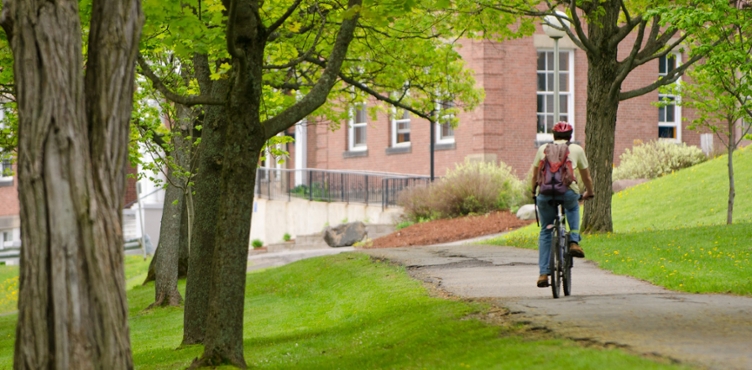
Reflection
Please take a few minutes to write and answer the provided reflection questions. A good response is usually a minimum of five sentences.
We strongly recommend that you:
- Keep a reflection notebook, log, or journal, and save a copy of your reflection in it
- Share and discuss your response with others
- If you are completing this module as part of a class or workshop, you will likely be discussing your reflection as part of a group activity.
If you are completing this module alone, try finding a group of interested friends or colleagues to discuss your reflections with.
1.How do you feel about climate change? Think about what effects climate change will have on your community or the place you call home or how climate change will affect your future choices.
2.What was your carbon footprint in the carbon footprint activity above? Do you think this is an accurate assessment? Why or why not?
3.When you consider the categories assessed by the calculator, what obstacles are there for you and/or people in your community to reduce their carbon footprint?
4.What are some positive actions being taken in your community to help deal with climate change? If you don’t know about any currently happening, what actions could you or others in your community take to deal with climate change or help to remove obstacles?
Focus on: Eco-anxiety
Increasing numbers of people worldwide are experiencing negative mental health impacts due to climate change. This is a normal response to the crisis we face.
In addition to eco-anxiety (anxiety focused on the effects of climate change and other ecological issues), some people are experiencing eco-grief (grief for the losses being experienced due to climate change) and eco-paralysis (feeling overwhelmed and helpless in the face of the climate crisis).
If you are experiencing one or more of these feelings, it is important to remember that you are not alone. Mental health experts suggest taking the following steps:
- Remember that both good and bad things happen in this world. Step back from “doom-scrolling” and focus on stories about climate hope and solutions.
- Talk about your feelings with your friends and people you trust.
- Make time for self-care, including exercise, mindfulness, meditation, and similar activities.
- Spend time in nature. The mental and physical health benefits of time outdoors are increasingly well-researched.
- Take time to engage in creative expression, such as visual art, drama, poetry, or writing, etc.
- Take time to reflect on your place in the world, your values, and your particular strengths that you can bring to take action.
- Build your social connections by joining organizations, groups, and communities of interest with similar values to your own. Take part in events and help build community with like-minded people focused on positive solutions.
- Create positive spaces to talk about the many impacts of climate change with others.
- Take individual and collective action on climate change – from small changes in your habits to getting involved in politics – based on your strengths and interests.
- Remember that it is important to also take breaks and time to recharge yourself. Let yourself take time without feeling guilty.
Learn more:
- Exploring climate change and mental health
- How climate change is re-shaping the way Gen Z works
- Inner Development Goals: Skills for sustainable development
*External video - no transcript available
Conclusion
In this module, we looked at what climate change is and how the mechanism behind climate change, the greenhouse effect, works. We took a brief look at the role of the IPCC (Intergovernmental Panel on Climate Change) and how the Sustainable Development Goals (SDGs) connect with climate change and its effects. We paused to quickly check your understanding, and then surveyed some of the positive actions being taken toward climate action at the international, national, provincial, university, and personal levels, along with some of the obstacles faced at each level of action.
You took a few minutes to use a simple carbon footprint calculator and then took some time to reflect on how you feel about climate change, your carbon footprint results, how climate change is or might be affecting your community in the future, and what positive actions you or your community can take to help. Finally, we wrapped up with a quick look at eco-anxiety, a growing mental health issue that has deep ties to climate change.
Resources
Read more:
Webinars & tools:
Videos:
- Climate change – We are the problem & the solution
- What is the greenhouse effect?
- Introduction to climate justice
- Can you fix climate change?
- Do we need nuclear energy to stop climate change?
- Climate change 101 with Bill Nye
- Act now on climate change – Greta Thunberg
- Climate change – Why the urgency?
- Young people are the solution to climate change
- What is climate adaptation?
- How can we adapt to climate change?
Academic resources:
- Clayton, S. (2020). Climate anxiety: Psychological responses to climate change. Journal of Anxiety Disorders, 74, 102263.
- Fawzy, S., Osman, A. I., Doran, J., & Rooney, D. W. (2020). Strategies for mitigation of climate change: a review. Environmental Chemistry Letters, 1-26.
- Wynes, S., & Nicholas, K. A. (2017). The climate mitigation gap: education and government recommendations miss the most effective individual actions. Environmental Research Letters, 12(7), 074024.
Sustainability in social media
TikTok
Podcasts
- Sustainababble
- Listen on Spotify or Apple Podcasts
- Eco-warriors
- Listen on Spotify or Apple Podcasts
- Good Together
- Listen on Spotify or Apple Podcasts
- Green Dreamer
- Listen on Spotify or Apple Podcasts
- Conscious Chatter
- Listen on Spotify or Apple Podcasts
- A Sustainable Mind
- Listen on Spotify or Apple Podcasts

This work is licensed under a Creative Commons Attribution-NonCommercial 4.0 International License.
